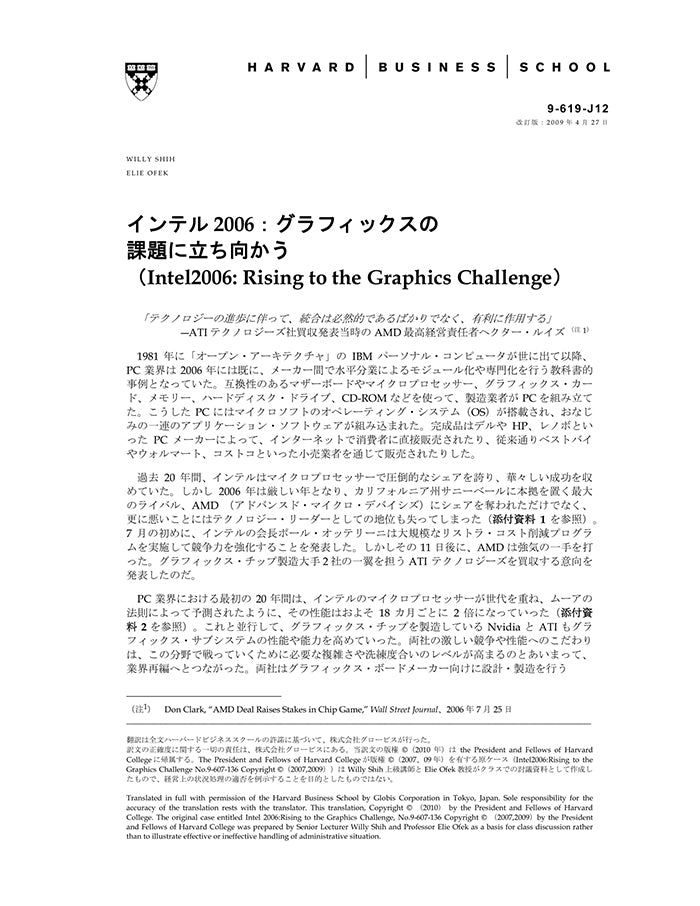インテル 2006:グラフィックスの 課題に立ち向かう
受取状況を読み込めませんでした
20年以上にわたるPCハードウェア業界の進化を説明する。1981年のIBMパーソナルコンピューターの出現により、業界では高度な標準化とモジュール化が推進され、のちに教科書的事例となっていた。インテルはマイクロプロセッサーで圧倒的なシェアを誇り、華々しい成功を収めていたが2006年最大のライバル、AMD (アドバンスド・マイクロ・デバイシズ)にシェアを奪われた。その後、AMDはグラフィックス・チップ製造大手2社の一翼を担うATIテクノロジーズを買収する意向を発表した。AMDが取ったグラフィックスに関する動きは戦略的に間違っていたのだろうか。あるいは、インテルから見ればそれは深刻な長期的脅威となるのだろうか。 Examines the evolution of the PC hardware industry over the span of two and a half decades. The open architecture design of the IBM Personal Computer followed by the rapid appearance of clones drove a high level of standardization and modularity in the industry, and value was distributed along the value chain depending on levels of competition and ability to substitute components at each level. On the hardware side two component segments, the microprocessor and the graphics processor unit (GPU), ultimately became the most valuable parts of the chain. The GPU business had settled into a duopoly with Nvidia, Inc. and ATI Technologies (ATI). Intel had dominated the microprocessor segment, but Advanced Micro Devices (AMD) was consistently a thorn in Intel's side. Addresses the prospects of the graphics function becoming integrated with the microprocessor on a single piece of silicon. AMD had just announced the acquisition of ATI and Paul Otellini, Intel's CEO, is faced with the question of what he should do. Should he buy Nvidia, should he continue with his own internal graphics efforts, or should he listen to some of his customers and leave things separate?
【書誌情報】
ページ数:25ページ
サイズ:A4
商品番号:HBSP-619J12
発行日:2007/6/29
登録日:2019/9/30

